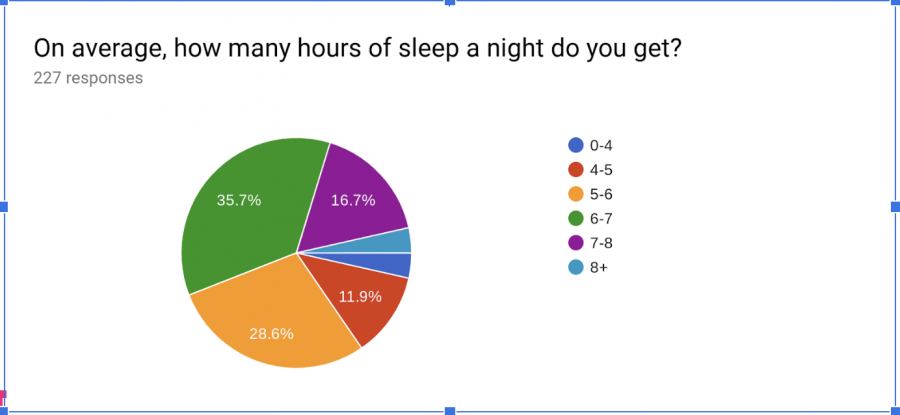Sleep or succeed? WHS student dilemma
How many hours of sleep do teenagers need? What’s the deal with blue light? What is melatonin? The conversation about teenage sleep schedules has been going on for decades. Hi’s Eye investigated how WHS students fit into this conversation.
According to sleepfoundation.org, teens need about 8-10 hours of sleep per night to function best. However, according to a Hi’s Eye survey, only 3.5 percent of WHS students reported getting eight or more hours of sleep per night on average. The survey also shows that 35.8 percent of students get 6-7 hours of sleep and 28.3 percent get 5-6 hours.
Some students have taken it upon themselves to change their sleep schedules so it better complements their school work. For example, senior Brady Smith does all her homework between midnight and 3 a.m. because she finds that’s when she works best.
“I really enjoy coming home after school and taking a nap if I can because, for me, I can’t focus if I’m tired,” said Smith.
With getting the necessary hours of sleep being an issue within itself, for some students falling asleep in the first place is an added struggle. According to Dr. Rebecca Robbins, the lead study investigator at NYU’s Langone Health’s School of Medicine, it takes a healthy sleeper 15 minutes to fall asleep. This appears to be a struggle for some students as nearly 28 percent reported taking an hour or more to fall asleep.
One of the reasons for this could be exposure to blue light from screens before bed. Blue light, according to the National Sleep Foundation, is emitted from screens and can delay the release of the natural hormone melatonin, which lets the body know when it’s time to sleep and wake up. Blue light increases alertness and resets the body’s internal clock to a later schedule.
The difficulty with this is that many students stay up late using technology for homework. Even though the National Sleep Foundation recommends a cutoff from blue light emitting devices two hours before going to sleep, this is impossible for most students. This is apparent as 92.5 percent of students reported going on their phones right before bed either every night or some nights.
Many students are choosing an alternative approach to sleeplessness and are taking over-the- counter sleep aids, such as synthetic melatonin. Nearly 7 percent of students reported taking melatonin on a regular basis, and 27.4 percent reported having taken it at some point. “My body got too used to it, so whenever I took it it wouldn’t help me sleep and it made my anxiety worse,” said WHS alum Stella Billek.
In this rapidly expanding world of over-the-counter drugs more and more students are turning to products like melatonin to help them fall asleep. For example, 6.4 percent reported taking a CBD product and 5.1 percent reported taking NyQuil or ZzzQuil in order to help them fall asleep.
According to mayoclinic.org, these sleep aids contain antihistamines which you can quickly build up a tolerance to and can make you groggy the next day. Senior Julia Rickert said, “If I don’t sleep for long enough after taking NyQuil I’ll wake up feeling even more tired than I did when I went to bed.”
This might hinder the performance of students in their first-period classes, as they are too groggy to fully pay attention. “Last year my first-period class was half asleep,” said Science Teacher Susan Terra.
In a world where high school students are playing sports, volunteering, attending clubs and taking as many challenging classes as possible, finding the balance between sleep and work is near impossible. If students can’t start their homework until after their extracurriculars, and you need your laptop to do your homework, there’s a good chance you don’t have the time to unplug for two hours before bed.
Students face a revolving door of expectations and because of that, sleep is no longer a priority.

